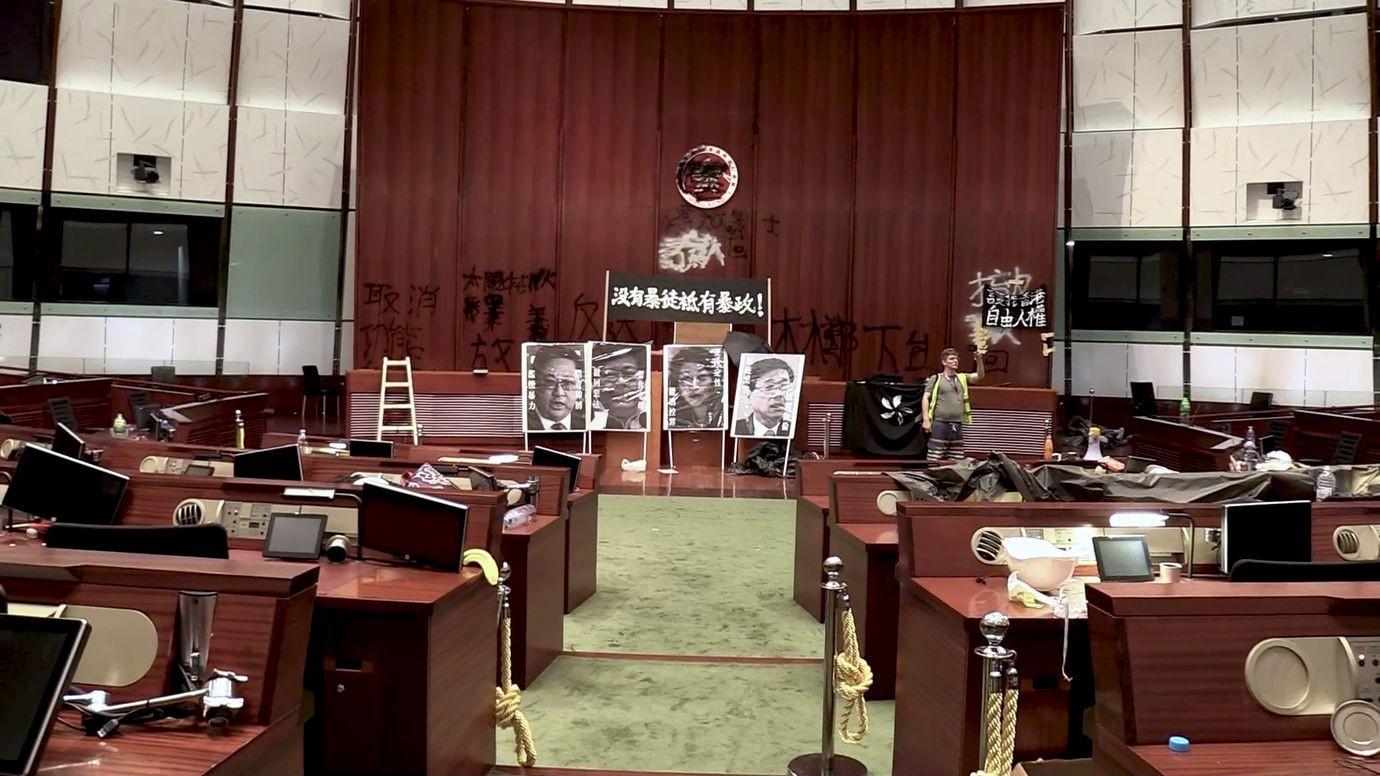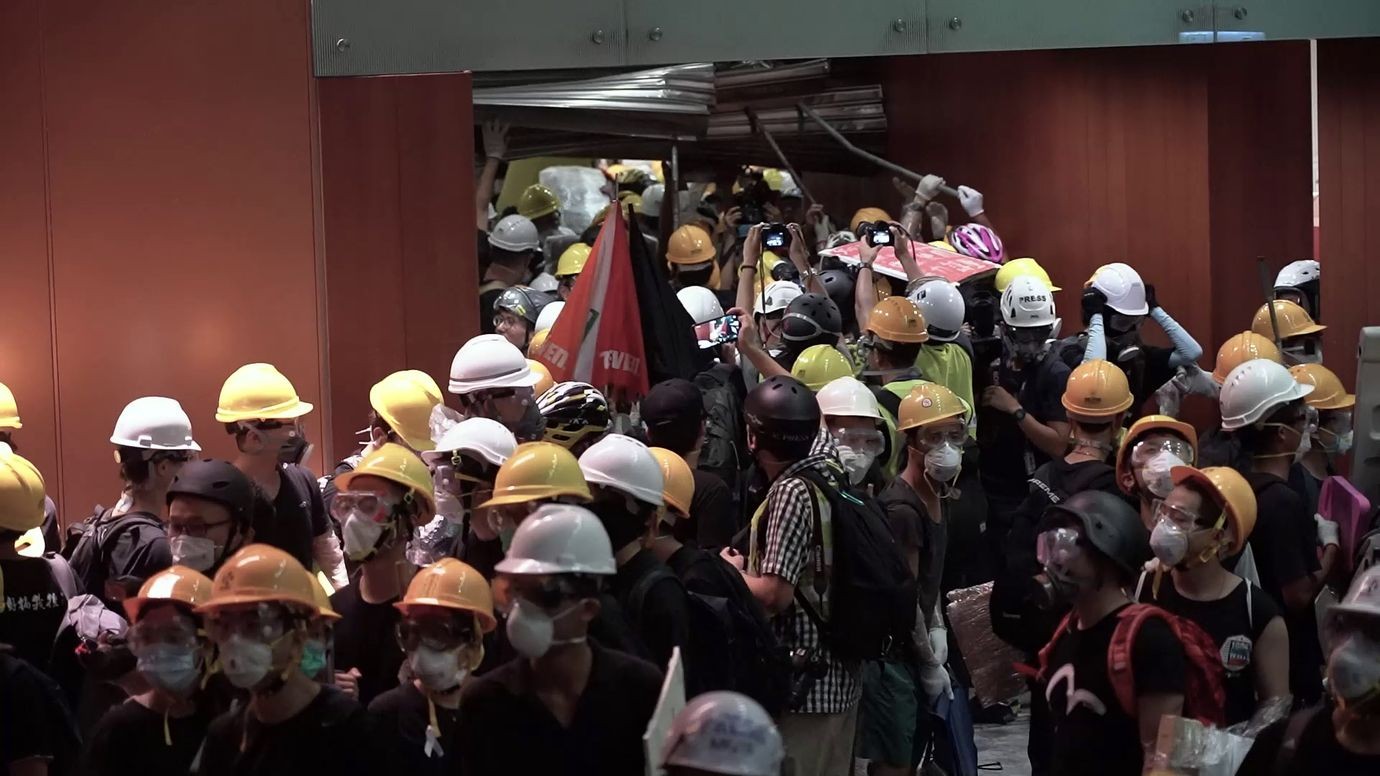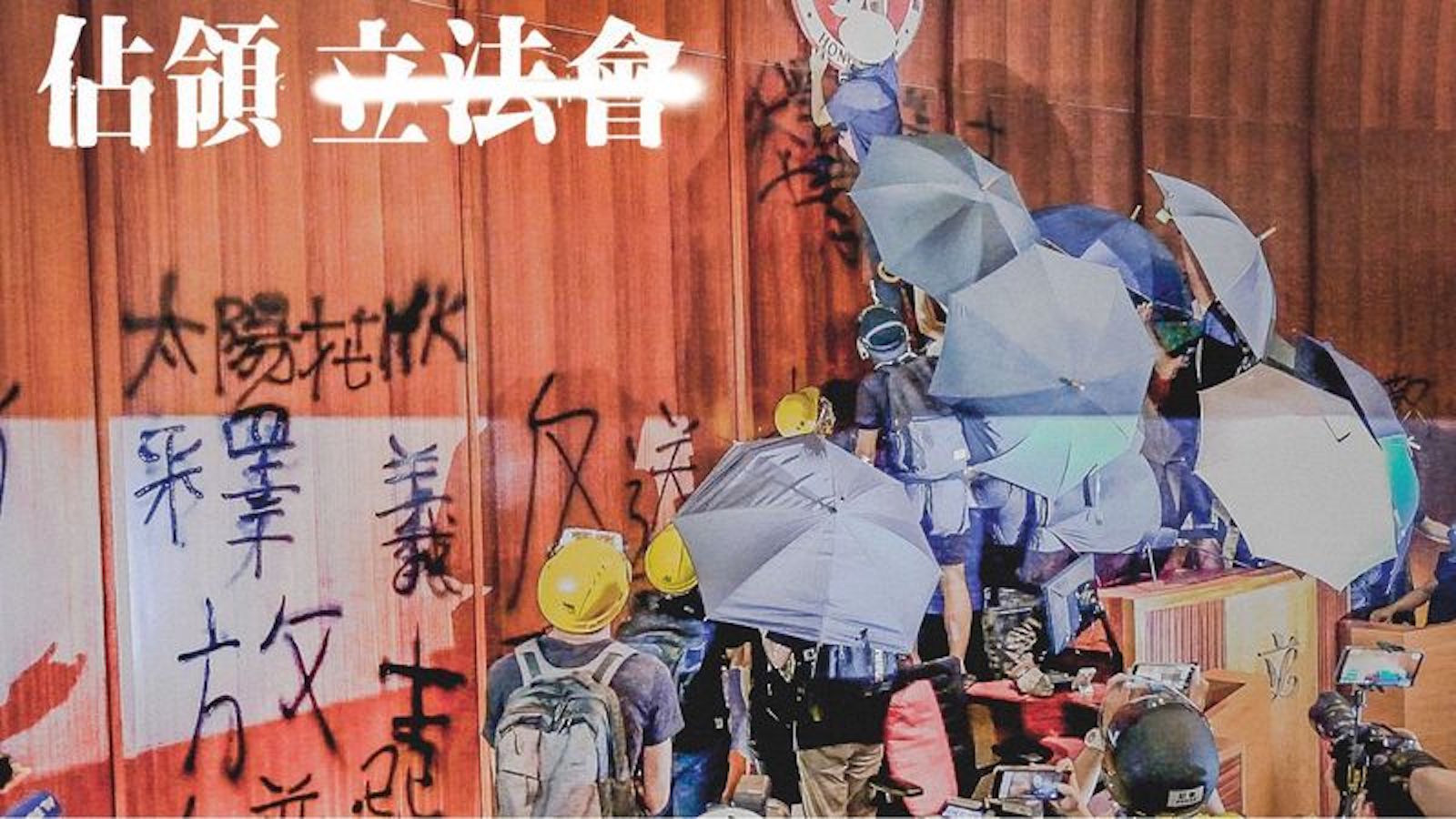by Brian Hioe
語言:
English
Photo Credit: Taking Back the Legislature
TAKING BACK THE LEGISLATURE (佔領立法會), produced by the Hong Kong Documentary Filmmakers group, is a powerful document of one of the most dramatic events of the Hong Kong protests of summer 2019. The short film covers the attempted occupation of the Hong Kong Legislative Council (LegCo) that took place on July 1st, 2019, during the anniversary of the 1997 handover of Hong Kong from British to Chinese control. This was the first time that LegCo was occupied in the history of Hong Kong, as part of a set of protests that originally began in protest to an extradition bill that would have allowed Hongkongers to be deported to China to face charges—something that was feared would be used to target political dissidents in Hong Kong.

Photo credit: Taking Back the Legislature
The film begins with protesters gathered outside LegCo, deliberating if and how to break into LegCo, as the main protest march slowly crawls through Hong Kong toward them. Occupiers first debate what time the attempt to break into LegCo should begin and then eventually engage in efforts to break the reinforced glass of the building. This is not without some contestation, as some argue the futility of the action, as past attempts have not succeeded and they fear this attempt will prove similar, resulting in the arrest of participants.
What follows is eight hours of attempts to break through the reinforced glass, followed by numerous brief skirmishes with police. When occupiers are finally successful in breaking into LegCo, police unexpectedly withdraw from the building, leaving the protesters to try and build critical mass for an occupation. Despite the massive size of some of the protests that took place in Hong Kong that summer—with close to two million taking to the streets of Hong Kong at the height of the protests—they are not successful in marshaling more than fifty participants.
Debate then breaks out among the participants about whether to withdraw or not, with a small minority of four individuals deciding to stay in LegCo to face arrest and calling on the others to respect their decision. The consensus of the crowd that has gathered outside is eventually that the four individuals should not be allowed to face arrest alone, resulting in the crowd breaking into LegCo again to forcibly remove the four against their will, stating after numerous arrests and some suicides thought to have taken place as a result of the protests, that they are not willing to lose more people—this moment, which has been well-documented through livestreams and video recordings, is arguably one of the most emotional moments of the summer 2019 protests.

Photo credit: Taking Back the Legislature
What Taking Back the Legislature powerfully evokes is the conflicted process of decision-making during social movements. This is particularly the case with occupation-style movements, in which the question of whether to stay and occupy or to withdraw and fight another day is always lurking in the background. However, the Hong Kong protests of 2019 were characterized by their leaderless nature, with decisions made by collective deliberation.
As seen in the film, this torturous, highly emotional process of argumentation took place at every step of decision-making during the movement, whether with regards to the decision to occupy LegCo, the question of how to occupy it, and questions made about whether to withdraw. During such moments, the individual intersects with the collective, in that individuals make arguments as to the best course of action for the movement writ large, but usually comply with the decision of the collective will.
The film depicts this expertly, with the perspective of the camera melding into the crowd, but also pulling away at key moments to reveal the perspective of the filmmakers as individuals in the larger protest at times. This is quite striking with a moment in which the cameraman is struck by a police officer and needs to pull out from the protest due to injury, as well as another scene in which the cameraman returns, phantom-like, to the now-empty LegCo chambers to retrieve their bag—with the LegCo chambers still very much showing the traces of the brief occupation.
Such questions regarding collective deliberation and democracy, then, are brought most to the fore when the four individuals that wish to stay in LegCo are forcibly removed by the other demonstrators, kicking and screaming. This is always the question in a democracy, regarding how to respect the wishes of a minority, while also enacting majority rule.

Photo credit: Taking Back the Legislature
But to this extent, perhaps this is what the film brings out most of all—that in a pro-democracy movement against authoritarianism, the movement itself constituted a form of democracy in action, with collective decision-making made for each and every action—even as this could be a somewhat contorted and painful process. As such, the notion of taking back or reclaiming the legislature proves quite powerful, seeing as the movement itself was a form of democracy in motion.
In this respect, Taking Back the Legislature is a film highly worth watching, not only for its ground-level glimpse into a key moment in the Hong Kong protests, because of these larger questions it raises regarding the nature of democracy. The film is a must-view for those following the Hong Kong protests or more broadly interested in contemporary protest in Asia.



